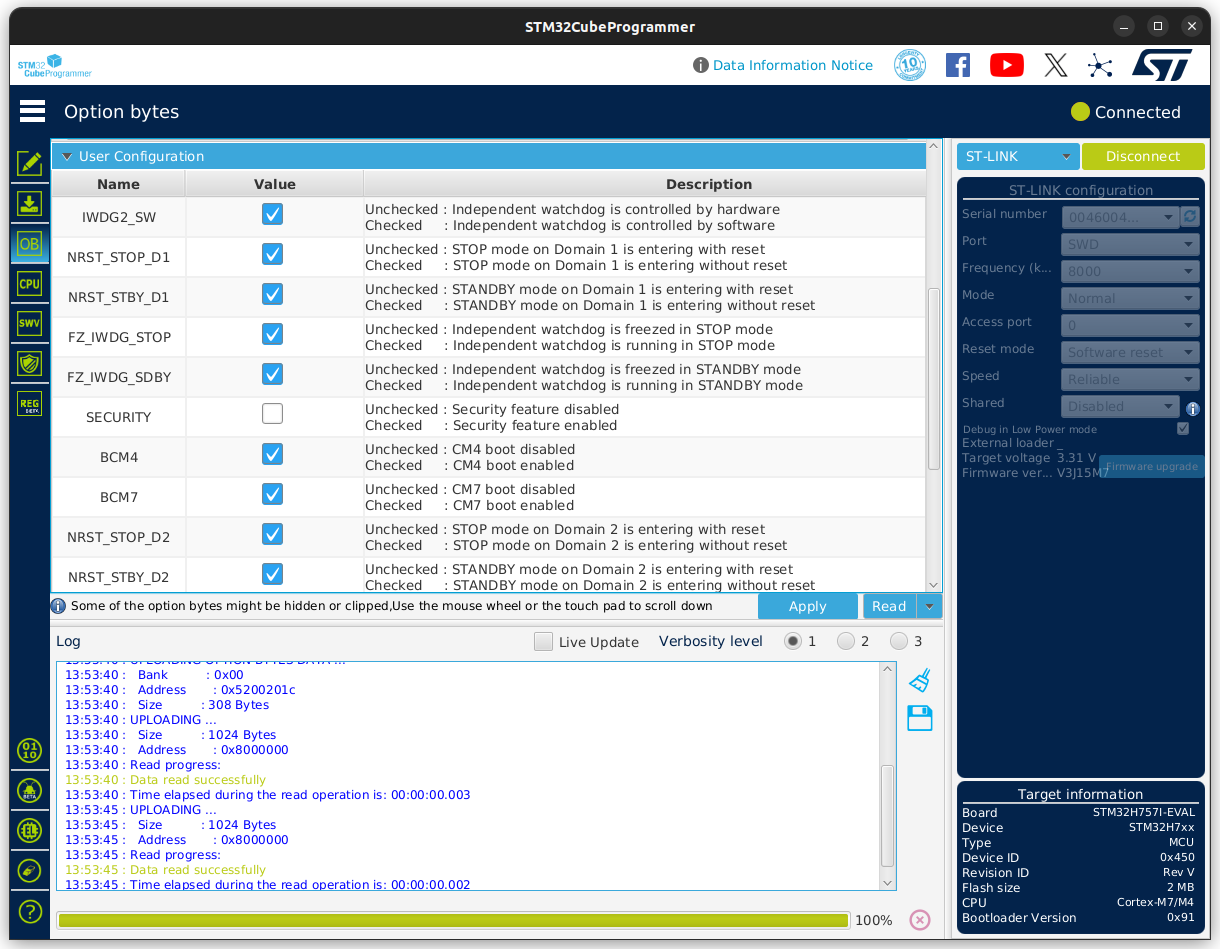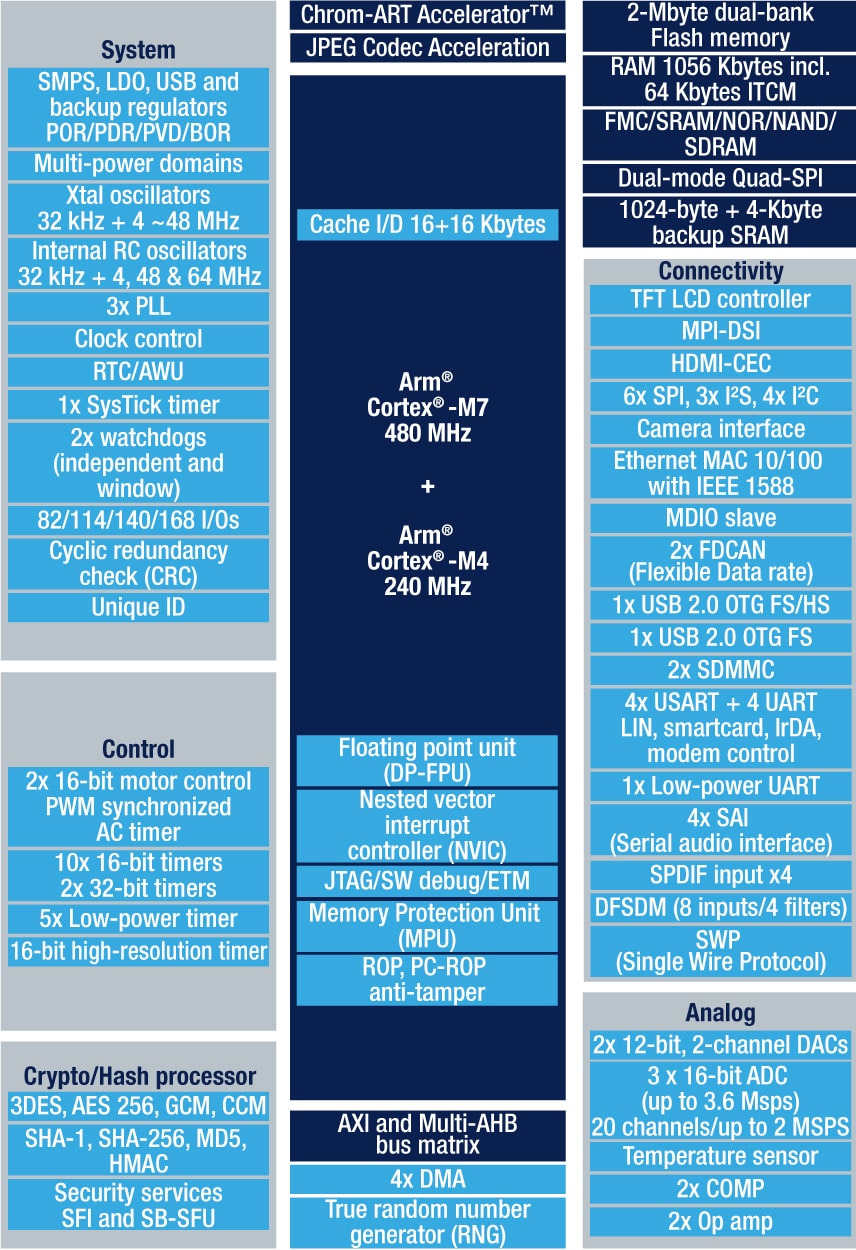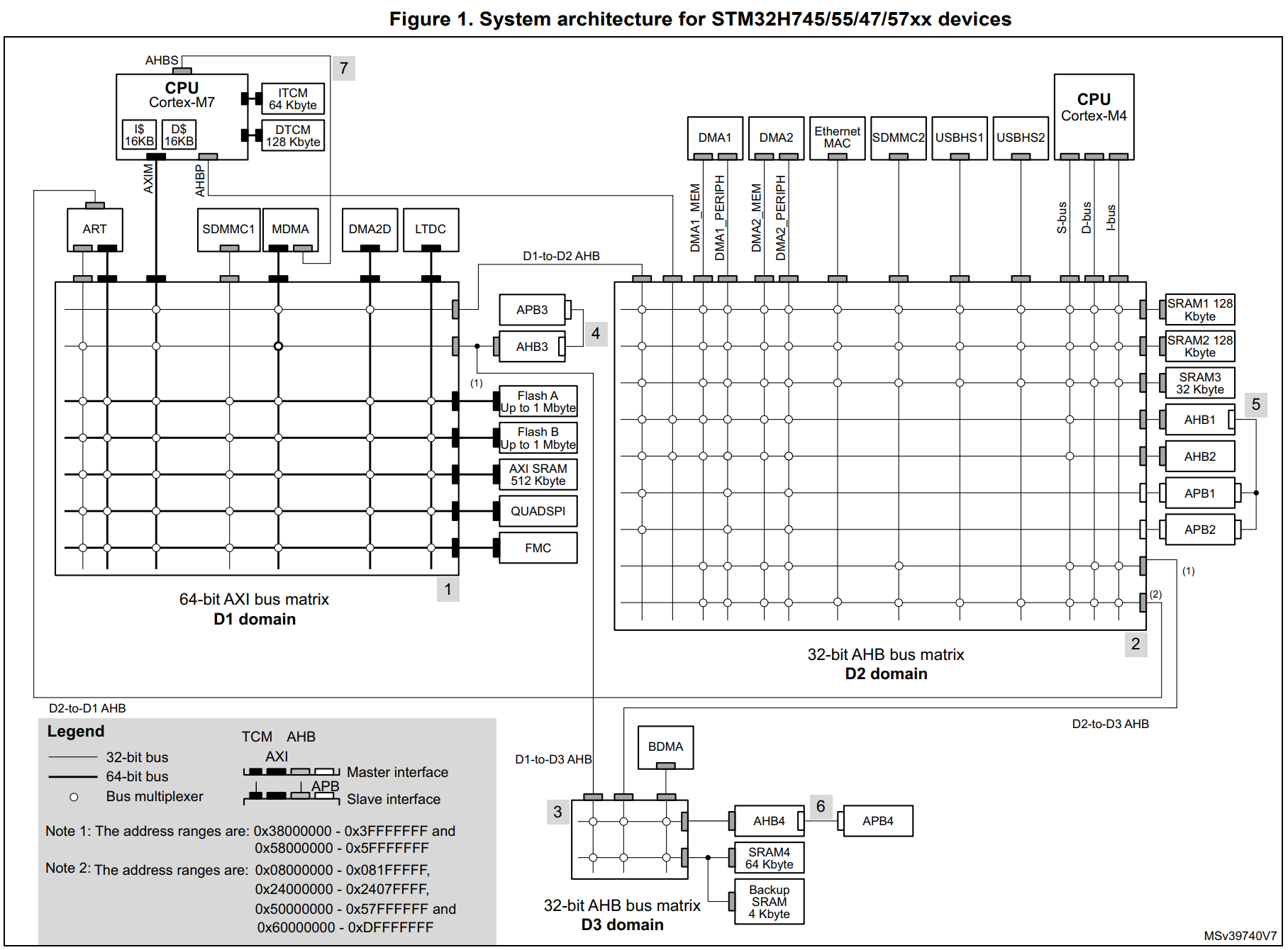MMU 처럼 메모리 관리하는건 아니고, 메모리 접근을 관리하는 녀석인듯.
| This application note describes how to manage the memory protection unit (MPU) in the STM32 products The MPU is an optional component for the memory protection. Including the MPU in the STM32 microcontrollers (MCUs) makes them more robust and reliable. The MPU must be programmed and enabled before using it. If the MPU is not enabled, there is no change in the memory system behavior. This application note concerns all the STM32 products listed in Table 1 that include the Cortex®-M0+/M3/M4 and M7 design that supports the MPU. For more details about the MPU, refer to the following documents available on http://www.st.com • Programming manual STM32F7 series and STM32H7 series Cortex®-M7 processor (PM0253) • Programming manual STM32F10xxx/20xxx/21xxx/L1xxxx Cortex®-M3 (PM0056) • Programming manual STM32 Cortex®-M0+ MCUs programming manual (PM0223) • Programming manual STM32 Cortex®-M4 MCUs and MPUs (PM0214) • Programming manual STM32 Cortex®-M33 MCUs (PM0264) Table 1. Applicable products Type Product series Microcontrollers • STM32C0 series • STM32F1 series, STM32F2 series, STM32F3 series, STM32F4 series, STM32F7 series • STM32G0 series, STM32G4 series • STM32H5 series, STM32H7 series • STM32L0 series, STM32L1 series, STM32L4 series, STM32L4+ series, STM32L5 series • STM32U0 series, STM32U5 series • STM32WB series, STM32WB0 series |
MPU는 2개 있고, 각각의 CPU에 대해서 메모리 접근을 확인한다고.
꽤 중요한 녀석인데 데이터시트에 고작 아래의 내용이 전부냐?!
| 3.2 Memory protection unit (MPU) The devices feature two memory protection units. Each MPU manages the CPU access rights and the attributes of the system resources. It has to be programmed and enabled before use. Its main purposes are to prevent an untrusted user program to accidentally corrupt data used by the OS and/or by a privileged task, but also to protect data processes or read-protect memory regions. The MPU defines access rules for privileged accesses and user program accesses. It allows defining up to 16 protected regions that can in turn be divided into up to 8 independent subregions, where region address, size, and attributes can be configured. The protection area ranges from 32 bytes to 4 Gbytes of addressable memory. When an unauthorized access is performed, a memory management exception is generated. |
[링크 : https://www.st.com/resource/en/datasheet/stm32h757ai.pdf]
'embeded > Cortex-M7 STM' 카테고리의 다른 글
| STM32H7 디버깅 설정(cubeIDE) (0) | 2024.07.22 |
|---|---|
| STM32H750 operation mode (0) | 2024.07.22 |
| STM32 HSEM (Hardware SEMaphore) (0) | 2024.07.22 |
| STM32H757 User configuration (0) | 2024.07.22 |
| STM32CubeProgrammer (0) | 2024.07.22 |











